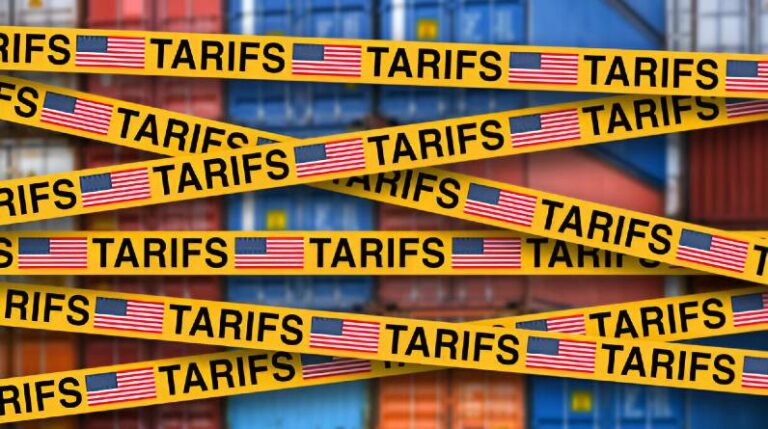In an increasingly complex global economy, the ripple effects of trade policies—especially tariffs—are making waves across every corner of American commerce. From corporate giants like PepsiCo and Procter & Gamble to small neighborhood retailers and manufacturers, no sector remains untouched. Recent actions by the Trump administration, including sweeping import duties and aggressive tariff strategies—particularly against China—have triggered a cascade of consequences that businesses must now urgently adapt to.
This article provides an in-depth, people-first look at how these trade developments are affecting U.S. companies of all sizes and offers practical strategies for businesses navigating this volatile environment.
Understanding the Tariff Landscape: What Has Changed?
Tariffs are taxes imposed on imported goods, often used as a tool to protect domestic industries or apply political pressure. Under the current trade policy direction, the United States has implemented:
- A 10% universal tariff on nearly all imported goods.
- Targeted tariffs up to 145% on Chinese imports, effectively creating a trade embargo.
- Sudden, unpredictable policy shifts, making future planning a challenge.
These sweeping changes have turned global trade dynamics on their head, leaving both multinational corporations and Main Street entrepreneurs grappling with rising costs, supply chain delays, and shifting consumer behavior.
The Corporate Perspective: Uncertainty and Cost Pressures
Rising Supply Chain Costs
Large companies like PepsiCo, IBM, and Procter & Gamble have publicly acknowledged the economic strain tariffs are causing. Increased duties on raw materials and finished goods mean these companies are now paying more for the same inputs—and in many cases, passing those costs onto consumers.
“Tariffs are inherently inflationary,” stated Procter & Gamble CEO Jon Moeller, who anticipates raising prices and reformulating products to maintain margins.
Consumer Behavior Is Shifting
Corporate earnings reports are beginning to reflect the toll on consumer sentiment. Chipotle, for instance, saw its first drop in same-store sales since 2020. The reason? Customers are cutting back on discretionary spending, wary of economic instability.
“Economic concerns were the overwhelming reason for reduced restaurant visits,” said Chipotle CEO Scott Boatwright.
The airline industry has also taken a hit. American Airlines, Delta, and Southwest have all revised or pulled financial guidance due to economic uncertainty. Executives report that lower-income travelers are flying less, a troubling sign for travel and hospitality sectors reliant on discretionary spending.
The Small Business View: High Stakes and Fewer Safety Nets
While large corporations face challenges, small businesses are often less insulated and more vulnerable to disruption.
Cost Creep and Razor-Thin Margins
Small retail shops typically maintain limited inventory and lower volume orders, which means they already pay more per unit than larger competitors. Add tariffs to the mix, and the result is even higher inventory costs, longer delays, and eroded profitability.
For small manufacturers who source materials globally, tariffs mean higher input costs—often with no room to raise prices in a competitive market. According to a recent Small Business Majority poll, 53% of small business owners are concerned about the current trade strategy’s impact on their operations.
Power Imbalances and Customer Backlash
Some small suppliers are finding themselves pressured by larger retailers not to pass along tariff-related price increases. This creates an unsustainable squeeze: increased expenses with no opportunity to offset them, leading to potential layoffs or closures.
Moreover, since nearly 100% of tariff costs are passed to customers, small business owners must guess how much pricing pressure their clientele can handle before they take their dollars elsewhere.
Practical Strategies for Navigating the Tariff Era
Rather than waiting for policy clarity, smart businesses are proactively adjusting their models. Here are three proven strategies that can help:
1. Diversify Your Supply Chain
If you rely on materials or products from a tariff-heavy country (like China), it’s time to source from alternative regions. Countries with favorable trade agreements with the U.S. might offer lower tariff rates and better stability.
This tactic—known as supplier diversification—not only mitigates immediate cost impacts but also adds long-term resilience to your supply chain.
2. Consider On-Shoring
Relocating part of your manufacturing process closer to home—or at least to countries with more stable trade relationships—can offset tariff-related risks. While labor costs may be higher, on-shoring reduces shipping time, customs hurdles, and future tariff exposure.
3. Lean Operations and Strategic Financing
Optimize your inventory through a just-in-time approach rather than the traditional “just-in-case” method. This reduces storage and capital costs.
Also, consider financing options such as:
- Short-term credit lines from trusted banking partners.
- Inventory-based loans using existing stock as collateral.
- Strategic staffing reductions, focusing on roles directly tied to revenue generation.
Economic Impact and Long-Term Outlook
The broader macroeconomic consequences of current tariff strategies are hard to ignore:
- Stock market volatility: The Dow fell 9.1% in April—its worst April performance since 1932.
- Reduced international tourism: Businesses in New York and along the Canadian border report declining visits.
- Erosion of American brand sentiment: Negative global reactions to U.S. trade policy are hurting inbound travel and potentially long-term consumer loyalty abroad.
The International Monetary Fund has warned of a slowdown in global growth, citing the U.S. trade war as a key driver. Some economists now place the probability of a U.S. recession in 2025 at 50% to 70%, a sobering prediction for any business leader.
Final Thoughts: Turning Risk into Resilience
Tariffs are not just a geopolitical tool—they’re a reality-shaping force for U.S. businesses. Whether you’re leading a Fortune 500 company or a five-person startup, you must now factor trade policy into your strategic planning.
Success in this environment hinges on agility, strategic sourcing, and clear communication with stakeholders. By diversifying suppliers, rethinking operations, and planning proactively, businesses can transform uncertainty into opportunity.
In the words of seasoned entrepreneur and strategist Micah Logan:
“You must make your firm as lean as possible… and stick to key employees in revenue generation.”
The tariff landscape may continue to shift, but with the right strategies, businesses can stay one step ahead.


